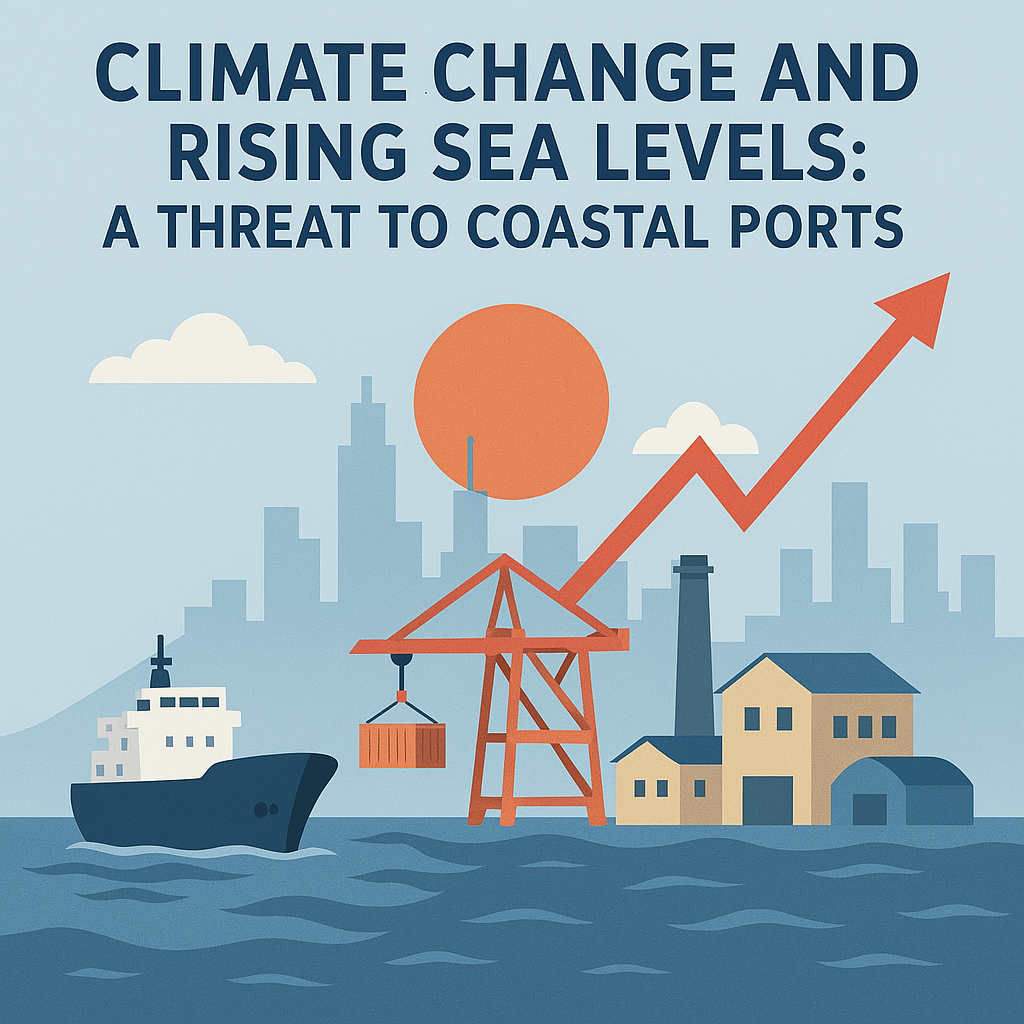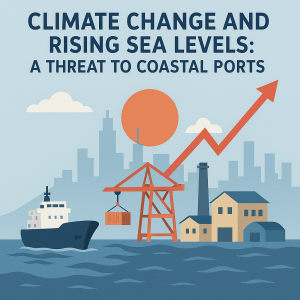Explore how climate change-induced sea-level rise poses significant risks to coastal ports, impacting global trade and necessitating adaptive strategies for resilience.
Navigating the Rising Tide
Coastal ports are the lifelines of global trade, handling approximately 80% of merchandise by volume. However, the escalating impacts of climate change, particularly rising sea levels, present formidable challenges to these critical infrastructures. How are ports worldwide bracing for this imminent threat, and what measures are essential to safeguard their operations?
Key Concepts: Understanding the Impact of Sea-Level Rise on Ports
The Science Behind Rising Sea Levels
Sea-level rise results from the thermal expansion of seawater as it warms and the melting of polar ice caps and glaciers. According to NASA, projections indicate a rise of 1 to 2 meters (3 to 6.5 feet) after 2100, leading to widespread coastal challenges. NASA Sea Level Change Portal
Vulnerabilities of Coastal Ports
Ports are uniquely susceptible due to their low-lying, waterfront locations. Elevated sea levels can lead to:
-
Increased Flooding: Higher baseline water levels mean that storm surges and high tides can more easily inundate port facilities.
-
Erosion of Infrastructure: Persistent water exposure can degrade docks, warehouses, and storage areas.ScienceDirect
-
Disrupted Operations: Flooded access routes and damaged equipment can halt port activities, leading to economic losses.
Applications & Examples: Real-World Impacts on Ports
Case Study: U.S. Seaports
In the United States, seaports face elevated risks from climate-induced sea-level rise. Studies have shown that scenarios with increased emissions predict significant sea-level increases, making ports more vulnerable to extreme sea levels and dangerous storms.
Global Perspective
Internationally, ports like those in the Gulf Coast have experienced land losses due to rising sea levels, turning dry land into wetlands or open water. From 1932 to 2016, Louisiana lost over 2,000 square miles of land area, highlighting the tangible impacts of sea-level rise. US EPA
Latest Trends & Future Outlook: Adapting to the New Normal
Investment in Resilience
Ports are proactively investing in infrastructure and enhanced flood protections. The International Chamber of Shipping reports that ports are making moves to invest in infrastructure and greater flood protections to protect against the costly threat from climate change. ptation Strategies
Adopting both gray infrastructure, such as seawalls, and nature-based solutions, like restoring mangroves, can mitigate flooding and erosion. Integrating traditional ecological knowledge into contemporary design offers sustainable resilience models. ASFPMArchitectural Digest
Economic Implications
The financial stakes are high. Disruptions to ports from climate extremes can have systemic impacts on global shipping, trade, and supply chains, with significant economic activity at risk annually. Nature
Conclusion: Steering Towards a Resilient Future
The confluence of climate change and rising sea levels poses an undeniable threat to coastal ports worldwide. Proactive adaptation, substantial investment in resilient infrastructure, and innovative strategies are imperative to safeguard these vital hubs of global commerce. Stakeholders must collaborate to navigate these challenges, ensuring that ports remain operational and efficient in the face of an evolving climate landscape.
FAQs
Q: How does sea-level rise specifically affect port operations?
A: Elevated sea levels can lead to increased flooding, erosion of infrastructure, and disrupted access routes, all of which can halt port activities and lead to economic losses.
Q: What are some examples of ports implementing adaptive measures?
A: Ports like those in the U.S. are investing in infrastructure and greater flood protections to combat the costly threats posed by climate change. ICS Shipping
Q: Are there cost estimates for port adaptations to sea-level rise?
A: Global investment costs for port adaptation to sea-level rise and provision of new areas are projected to be between $223 and $768 billion by 2050. AGU Publications


